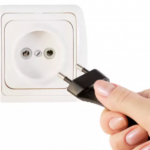Today, there are three main types of connecting radiators to pipes:
- Diagonal;
- Lateral one-sided;
- Lower radiator connection.

Consider briefly all three, focusing on the lower connection method. So, the diagonal connection method provides the most efficient heat transfer. In this case, the pipe through which the coolant is supplied is located at the top, and the discharge pipe is at the bottom of the radiator. This placement allows you to achieve maximum power. If you use the reverse connection - the supply pipe is at the bottom and the discharge pipe at the top - then the efficiency of the device drops by 10%.
Diagonal connection is well suited for long radiators, the number of sections of which is more than 10-12. With this type of connection, the pipes are conveniently hidden in strobes or behind a false wall.

One-way lateral connection is especially often used in apartment buildings. In this connection option, the supply pipe is located at the top of the radiator, and the discharge pipe is at the bottom. The main difference from the diagonal connection is that both pipes are placed on one side of the device.
It should be noted that in this case the heat transfer of the radiator compared to the connection of the diagonal type, decreases by 2%, and if the pipes are arranged in the reverse order, approximately 9-10% more heating power is lost instrument.

Connecting radiators from below is rarely practiced. Most often it is used for trunk connection, then when the supply and return pipes of the coolant cannot be hidden in the gates or behind the false wall.
The connection of a heating radiator designed for the lower type of installation is, for the most part account, to a one-sided scheme, since the wiring of both pipes - supply and return, is made inside instrument.

When tying a heating radiator with a lower connection, it is very important not to confuse or swap feed and return nozzles - it should be remembered that the return feed is always located first from the nearest angle.
Any radiator with a lower connection is universal by default. The device can be connected using the lower nozzles, or through the upper hole, after having unscrewed the control thermostatic valve from it. A feed pipe is mounted in its place, and the return pipe is connected to one of the lower nozzles. The other pipe must be plugged. In most cases, the binding of radiators with a lower connection is performed by copper, metal-plastic or polypropylene pipes.
-
 How to save on furniture
How to save on furniture
-
 How to beautifully restore windows?
How to beautifully restore windows?
-
 How to quickly and easily update wooden windows
How to quickly and easily update wooden windows
-
 Why does the socket not let in the plug of the appliance?
Why does the socket not let in the plug of the appliance?
-
 Storm sewage: how is it arranged and what are its features?
Storm sewage: how is it arranged and what are its features?
-
 Without which tools do not lay tiles
Without which tools do not lay tiles
-
 What is bad liquid wallpaper, as well as their advantages
What is bad liquid wallpaper, as well as their advantages
-
 How to make a fanless fan
How to make a fanless fan
-
 Simple and versatile door alarm
Simple and versatile door alarm
-
 Why you can not make mistakes when laying the first row of bricks
Why you can not make mistakes when laying the first row of bricks
-
 Methods for laying laminate on an uneven base
Methods for laying laminate on an uneven base
-
 Is it true that water savers save water
Is it true that water savers save water
New publications are published daily on our channel in Yandex. Zen
Go to Yandex. Zen


